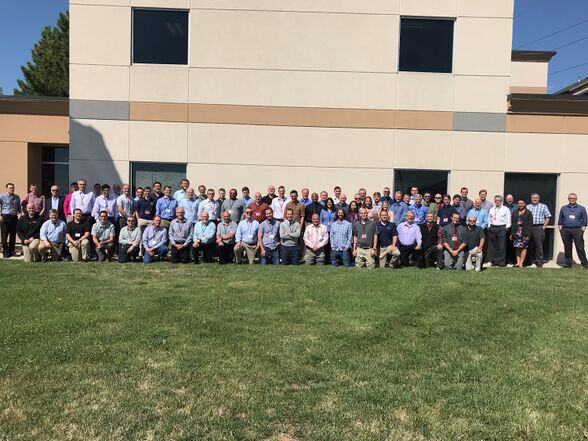Main Page: Difference between revisions
No edit summary |
No edit summary |
||
| Line 1: | Line 1: | ||
<strong>Welcome to the new website for the Engineered Residual Stress Implementation (ERSI) Working Group!</strong> | === <strong>Welcome to the new website for the Engineered Residual Stress Implementation (ERSI) Working Group!</strong> === | ||
== About == | == About == | ||
The Engineered Residual Stress Implementation (ERSI) Working Group is a consortium, of industry, academic, and government participants, dedicated to the various aspects of understanding, characterizing, developing, and analyzing residual stresses in metallic parts. Through collective engagement of competing companies that share this common goal, the consortium seeks to foster improvements in the state-of-the-art that will lead to wider implementation and benefit from processes that impart residual stresses. | The Engineered Residual Stress Implementation (ERSI) Working Group is a consortium, of industry, academic, and government participants, dedicated to the various aspects of understanding, characterizing, developing, and analyzing residual stresses in metallic parts. Through collective engagement of competing companies that share this common goal, the consortium seeks to foster improvements in the state-of-the-art that will lead to wider implementation and benefit from processes that impart residual stresses. | ||
[[File:ERSIphoto2018.jpg|none|thumb|588x588px]] | |||
== Purpose == | == Purpose == | ||
Revision as of 10:25, 17 January 2023
Welcome to the new website for the Engineered Residual Stress Implementation (ERSI) Working Group!
About
The Engineered Residual Stress Implementation (ERSI) Working Group is a consortium, of industry, academic, and government participants, dedicated to the various aspects of understanding, characterizing, developing, and analyzing residual stresses in metallic parts. Through collective engagement of competing companies that share this common goal, the consortium seeks to foster improvements in the state-of-the-art that will lead to wider implementation and benefit from processes that impart residual stresses.
Purpose
1. Identify and lay out a roadmap for the implementation of engineered deep residual stress which can be used in the calculation of initial and recurring inspection intervals for fatigue and fracture critical aerospace components.
2. Highlight gaps in the state-of-the-art and define how those gaps will be filled.
3. Define the most effective way to document requirements and guidelines for fleet-wide implementation.
